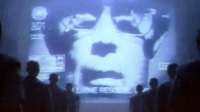Cult of Personality
Origin
The term "cult of personality" probably appeared in English around 1800-1850, along with the French and German usage. At first it had no political connotations but was instead closely related to the Romantic "cult of genius".
The political use of the phrase came first in 1877:
Neither of us cares a straw of popularity. Let me cite one proof of this: such was my aversion to the personality cult [orig. Personenkultus] that at the time of the International, when plagued by numerous moves [...] to accord me public honor, I never allowed one of these to enter the domain of publicity [...] —Karl Marx, A letter to German political worker, Wilhelm Blos, 10 November 1877
The terms "cult of personality" and "personality cult" were popularized by Khrushchev's Secret Speech of 1956. Robert Service notes that a more accurate translation of the Russian "культ личности" ("kul't lichnosti") is the "cult of the individual".
Description
A cult of personality arises when an individual uses mass media, propaganda, or other methods, to create an idealized, heroic, and, at times god-like public image, often through unquestioning flattery and praise. Sociologist Max Weber developed a tripartite classification of authority; the cult of personality holds parallels with what Weber defined as "charismatic authority". A cult of personality is similar to hero worship, except that it is established by mass media and propaganda.
Throughout history, monarchs and heads of state were almost always held in enormous reverence. Through the principle of the divine right of kings, for example, rulers were said to hold office by the will of God. Ancient Egypt, Japan, the Inca, the Aztecs, Tibet, Thailand, and the Roman Empire (see imperial cult) are especially noted for redefining monarchs as god-kings.
The spread of democratic and secular ideas in Europe and North America in the 18th and 19th centuries made it increasingly difficult for monarchs to preserve this aura. However, the subsequent development of photography, sound recording, film, and mass production, as well as public education and techniques used in commercial advertising, enabled political leaders to project a positive image like never before. It was from these circumstances in the 20th century that the best-known personality cults arose. Often these cults are a form of political religion.
Personality cults were first described in relation to totalitarian regimes that sought to alter or transform society according to radical ideas. Often, a single leader became associated with this revolutionary transformation, and came to be treated as a benevolent "guide" for the nation without whom the transformation to a better future couldn't occur. This has been generally the justification for personality cults that arose in totalitarian societies of the 20th century, such as those of Adolf Hitler and Joseph Stalin.
Not all dictatorships foster personality cults, not all personality cults are dictatorships (some are nominally democratic), and some leaders may actively seek to minimize their own public adulation. For example, during the Cambodian Khmer Rouge regime, images of dictator Pol Pot (Saloth Sar) were rarely seen in public, and his identity was under dispute abroad until after his fall from power. The same applied to numerous Eastern European Communist regimes following World War II.
